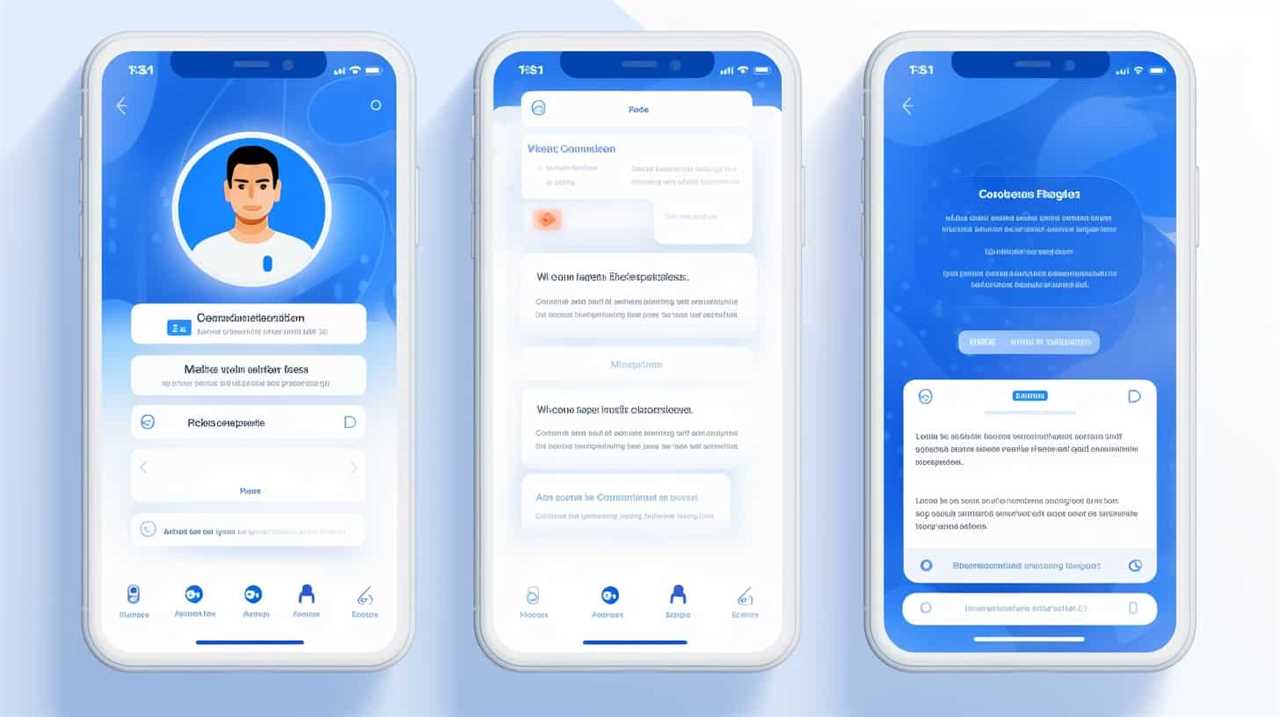A special chance presents itself when promoting psychological safety overlaps with leveraging AI to boost performance and growth.
We, as organizations, must navigate the delicate balance between innovation and well-being.
Integrating AI into the workplace requires us to consider its potential consequences and communicate transparently with our employees.
By addressing concerns, providing support, and offering training, we can ensure that AI does not compromise psychological safety.

Instead, we can harness its power to promote open communication, encourage collaboration, and foster a culture of risk-taking.
Through these efforts, we can create a positive and productive work environment that drives high performance and propels growth.
In this pursuit, the mastery of fostering psychological safety becomes paramount.
Key Takeaways
- Psychological safety empowers individuals to contribute valuable insights without fear of reprisal.
- AI can analyze data, identify patterns, and provide insights to foster psychological safety.
- AI facilitates collaborative problem-solving by providing access to diverse perspectives.
- AI helps create a positive work environment by addressing concerns and providing support.
The Importance of Psychological Safety
Psychological safety is a game-changer for high-performing teams, cultivating an environment where individuals feel empowered to speak up and contribute their valuable insights without fear of reprisal. When team members foster psychological safety, they create a shared belief that every voice matters and that taking risks is encouraged. This shared belief encourages team members to step out of their comfort zones, challenge the status quo, and bring forth innovative ideas.

In today’s fast-paced and rapidly changing business landscape, embracing psychological safety is more important than ever. As organizations strive to stay ahead, they must create an environment where team members feel safe to express their thoughts, ask questions, and share concerns. This is where artificial intelligence (AI) can play a significant role in fostering psychological safety.
Understanding AI’s role in psychological safety requires recognizing its ability to analyze vast amounts of data, identify patterns, and provide insights. By leveraging AI, organizations can create anonymous feedback mechanisms that allow team members to share their thoughts without fear of judgment or backlash. AI can also help identify potential biases or blind spots within team dynamics, enabling leaders to address them proactively.
By embracing AI in the pursuit of psychological safety, organizations can build a culture where innovation thrives, collaboration flourishes, and individuals are encouraged to contribute their unique perspectives.
In the subsequent section, we’ll delve into the ways AI can support and enhance psychological safety within teams.

Understanding AI’s Role in Psychological Safety
Continuing our exploration of fostering psychological safety, we can now delve into the role AI plays in ensuring a supportive and inclusive environment. Understanding AI’s role in psychological safety is crucial for organizations aiming to achieve high performance and growth. Here are three key aspects to consider:
- Decision-making transparency: AI algorithms can provide insights and recommendations based on vast amounts of data. By understanding how AI arrives at its decisions, employees can have greater confidence in the fairness and objectivity of the process. This transparency fosters psychological safety by reducing uncertainty and ensuring that decisions align with organizational values.
- Skill enhancement and job enrichment: AI can automate routine and repetitive tasks, freeing up employees’ time to focus on more meaningful and complex work. This shift allows individuals to develop new skills and engage in higher-value tasks, leading to personal growth and job satisfaction. By recognizing and supporting employees through this transition, organizations can foster psychological safety and create an environment conducive to high performance.
- Collaborative problem-solving: AI can facilitate collaboration by providing employees with access to diverse perspectives and knowledge. Through AI-powered tools, teams can collectively address complex challenges and make informed decisions. This inclusive approach fosters psychological safety by valuing individuals’ contributions and promoting a sense of belonging and trust within the team.
Understanding AI’s role in fostering psychological safety is crucial for organizations seeking high performance and growth. By leveraging AI to enhance decision-making transparency, promote skill enhancement and job enrichment, and enable collaborative problem-solving, organizations can create an environment where employees feel supported, included, and motivated to perform at their best.
Leveraging AI to Promote Open Communication
To promote open communication, we can leverage AI to analyze and enhance our team’s interactions and dynamics. AI can play a crucial role in fostering psychological safety within organizations by providing valuable insights into communication patterns that may hinder open and honest dialogue. By monitoring communication channels, AI tools can identify instances where psychological safety may be compromised, allowing organizations to intervene and provide support when needed.
Real-time feedback provided by AI can help teams recognize and address issues related to psychological safety on an ongoing basis. With AI’s ability to analyze communication dynamics, organizations can gain a deeper understanding of the underlying factors that contribute to a lack of psychological safety and implement targeted interventions for improvement.

By leveraging AI, organizations can create an environment that encourages open communication, leading to increased collaboration, innovation, and growth. AI can identify communication patterns that promote psychological safety and highlight areas for improvement, enabling teams to enhance their interactions and build stronger relationships.
Ultimately, by fostering open communication through the use of AI, organizations can create a culture where team members feel safe to express their thoughts, ideas, and concerns, paving the way for high performance and continued growth.
Encouraging Collaboration and Risk-Taking With AI
We can leverage AI to encourage collaboration and risk-taking within our teams. By incorporating AI-powered tools and strategies, we can create an environment that fosters psychological safety, promotes high performance, and drives growth.
Here are three ways we can use AI to encourage collaboration and risk-taking:

- Facilitating open dialogue: AI can help facilitate open dialogue by analyzing team dynamics and identifying areas where collaboration can be improved. With AI-powered tools, we can gather insights on team interactions, communication patterns, and areas of conflict. This information can then be used to initiate conversations and encourage team members to share their thoughts and ideas without fear of judgment.
- Providing feedback and recognition: AI can play a crucial role in providing feedback and recognition for risk-taking and innovative ideas. By using AI algorithms, we can identify instances of risk-taking and celebrate them within the team. This recognition not only encourages further risk-taking but also creates a culture where taking risks is valued and rewarded.
- Enabling virtual collaboration: With the rise of remote work, AI can help bridge the gap and enable virtual collaboration. AI-powered collaboration tools can facilitate real-time communication, project management, and idea sharing. By leveraging AI, teams can collaborate effectively regardless of physical distance, leading to increased collaboration and better outcomes.
Driving High Performance and Growth With AI
With AI as a catalyst, our teams can achieve high performance and drive growth by harnessing its capabilities. AI has the potential to enhance our decision-making processes, optimize operations, and improve overall efficiency. By leveraging AI technology, we can gather and analyze vast amounts of data, enabling us to make informed and strategic decisions quickly.
However, it’s crucial to ensure that the implementation of AI doesn’t compromise psychological safety within our teams. Fostering psychological safety is essential for creating an environment where individuals feel comfortable taking risks, sharing ideas, and collaborating effectively. This, in turn, leads to higher team engagement and motivation, ultimately driving high performance and growth.
To promote psychological safety while utilizing AI, it’s crucial to communicate openly and transparently with our employees about the impact of AI on their roles and responsibilities. Providing training and resources to help them understand and adapt to AI technology can alleviate concerns and build confidence in their ability to work alongside AI systems.
Furthermore, it’s essential to establish clear guidelines and expectations regarding the use of AI, emphasizing that it’s a tool to augment human capabilities rather than replace them. By emphasizing the value of human expertise and creativity in conjunction with AI, we can create an environment that encourages innovation, collaboration, and continuous growth.

Frequently Asked Questions
What Is an Example of How AI Is Helping With Safety?
AI is revolutionizing safety in various industries.
For example, it can analyze data to detect potential safety risks, such as identifying patterns that may lead to accidents or incidents.
By using machine learning algorithms, AI can predict and prevent these risks, ensuring a safer environment for workers.
Additionally, AI can assist in monitoring and analyzing real-time data from sensors and cameras, enabling proactive responses to safety concerns.

How Do You Foster Psychological Safety?
To foster psychological safety, we create an environment where everyone feels comfortable expressing their thoughts and concerns. We encourage open and honest communication, lead by example by showing vulnerability as leaders, and establish clear expectations for respectful feedback.
We provide opportunities for team members to share their ideas and concerns, and we recognize and reward behaviors that promote psychological safety. By doing so, we cultivate an atmosphere of trust and support, enabling high performance and growth.
What Are the 4 Types of Psychological Safety?
The four types of psychological safety are:
- Inclusivity safety: This type emphasizes the importance of creating an environment where every voice is valued and respected. It focuses on fostering a sense of belonging and camaraderie to encourage risk-taking and innovation.
- Learner safety: This type highlights the value of learning from mistakes and viewing them as opportunities for growth. It encourages individuals to take risks and explore new ideas without fear of punishment or criticism.
- Contributor safety: This type emphasizes the importance of fostering a sense of belonging and camaraderie to encourage risk-taking and innovation. It encourages individuals to share their ideas and perspectives without fear of judgment or rejection.
- Challenger safety: This type promotes cognitive diversity and open communication without fear of judgment. It encourages individuals to challenge the status quo, ask difficult questions, and offer alternative viewpoints.
Each type plays a crucial role in fostering psychological safety for high performance and growth. By creating an environment that embraces inclusivity, learning, contribution, and challenging ideas, organizations can cultivate an atmosphere where individuals feel safe to take risks, share their thoughts, and grow personally and professionally.

What Are the 5 Steps to Psychological Safety?
To create psychological safety within a team, there are five steps we can follow.
First, establish clear expectations for respectful and constructive feedback.
Second, encourage open and honest communication among team members.
Third, lead by example and demonstrate vulnerability as a leader.

Fourth, recognize and reward behaviors that promote psychological safety.
And finally, create opportunities for team members to share their ideas and concerns.
Conclusion
In conclusion, fostering psychological safety through the use of AI is crucial for high performance and growth in the workplace. By prioritizing open communication, collaboration, and risk-taking with AI, organizations can create a positive and productive work environment.
One interesting statistic to consider is that companies with high levels of psychological safety are 12 times more likely to be innovative.

By embracing AI responsibly and considering its impact on employees, organizations can unlock the full potential of their workforce and drive success.









